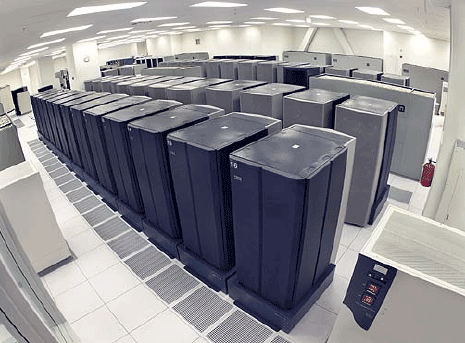If you look at the tax, power, maintenance, employment, and security expenses that a single data center creates it is not hard to see why AMD is making this move. However, while AMD will be saving a good deal of money by cutting back from 12 data centers to three, they will also increase one expenditure; security.
It is important to remember that having a smaller number of nodes in your WAN (Wide Area Network) means you are actually making targeted attacks easier and their effects more catastrophic. We are sure that AMD is aware of this (well we hope they are) and that some of the money saved will go into increasing security to protect this new environment.
In a recent conversation with PCWorld; Farid Dana, Director of IT Services at AMD, said that AMD will be moving to a cloud based network to allow AMD engineers access to the tools they need from anywhere in the world. Dana also stated that to do this they are relying on heavy virtualization. AMD has never said what platform they are running their private cloud on (and in all likelihood it is not VMWare or Citrix), but we do have to wonder about what they use.
AMD is also looking to force upgrade during this downsizing effort as they state that building a new Data Center using new hardware can cost about as much as upgrading an old one (this is actually quite true). AMD will need to work very hard to maintain what they hope to be a distributed super computer (it will have about 120,000 CPU cores when done) for their design and engineering work. In the short term the decommissioning of any data center is going to cost money. This ties-in with our expectations that AMD will continue to posts losses until around Q3 or Q4 2013. After that the differences should be quite nice for AMD as they be able to locate in newer facilities which are more efficient using newer hardware and running an updated platform that can take advantage of everything to provide a better network.
AMD may also have a slowdown in innovation (unless they are making the shift VERY carefully) as services become unavailable to engineers as they are shifted and paths are changed. This might not be noticeable though as they have just launched their 7xxx series mobile line up along with both Trinity and Brazos. They are not really due for another launch cycle until late this year. And with the delays that nVidia has had in their past two launches AMD can afford to delay their next GPUs by a few days’ time.
In the end the consolidation of AMD’s data centers could help to bring them back to profitability while increasing funds available to R&D which is good news no matter how you slice it.
Discuss this in our Forum

 AMD is hard at work to try and cut back on operating costs. This is a smart move on their part as they will have to figure out a way to bounce back from the recent loss they posted. To save money they are working to cut down on their data centers. Currently AMD operates 12 geographically distributed data centers. These have costs associated with them that go beyond simply keeping the lights on.
AMD is hard at work to try and cut back on operating costs. This is a smart move on their part as they will have to figure out a way to bounce back from the recent loss they posted. To save money they are working to cut down on their data centers. Currently AMD operates 12 geographically distributed data centers. These have costs associated with them that go beyond simply keeping the lights on.

